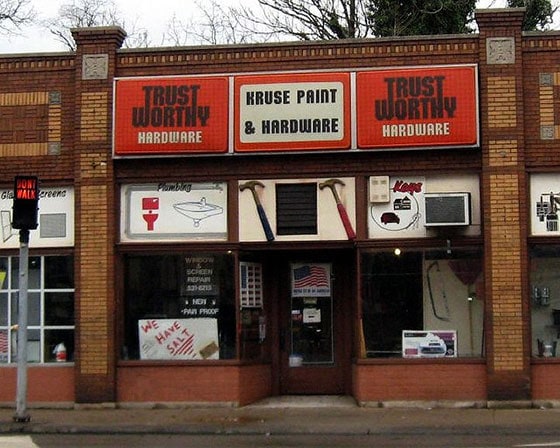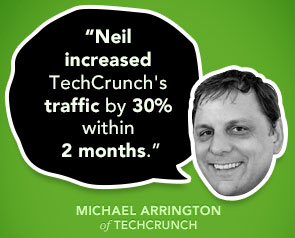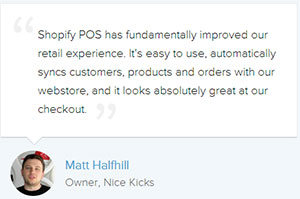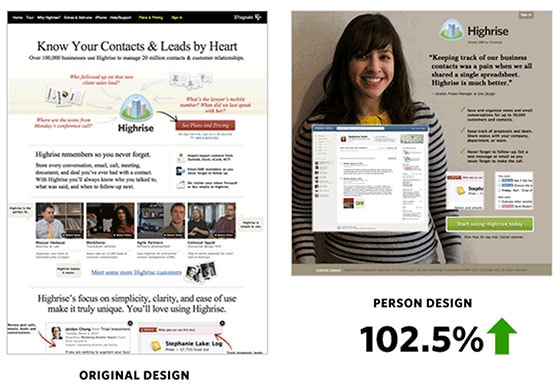
Testimonials are all about trust. Yet despite federal laws against fake testimonials, they appear to be rampant in the online marketing world. While there are no apparent large scale studies investigating exactly how common fake testimonials are, we do know that Yelp already filters out 20% of their reviews as “suspicious.”
Meanwhile, roughly 90% of people assume that testimonials found inside of marketing messages are “made up.” In other words, while they might trust reviews on an Amazon product page or some other non-sales platform, most consumers do not trust testimonials when they see them on landing pages.
How do we deal with these trust issues as marketers?
Are “Celebrities” The Answer?
According to research by Nielson, 68% of consumers trust consumer opinions posted online. At first, this seems to suggest that testimonials from “people just like you!” should be more effective than celebrity endorsements.
Unfortunately, this rationale breaks down as soon as we stop talking about “reviews” and start talking about “testimonials.”
In fact, testimonials in general are often overrated. A peer-reviewed study found that union members weren’t any more likely to switch from brand name to generic medications if a mailing contained a testimonial from one of their peers, even if they were from the same union.
Apparently peer testimonials either aren’t authoritative enough, or they aren’t trustworthy enough. This is where “celebrity” can be somewhat helpful. That said, we have to be careful with what we mean by that.
Here’s an example. Neil Patel was able to double his conversions by sharing testimonials from big brands, as opposed to testimonials from medium-sized businesses. QuickSprout still uses a floating box of Michael Arrington from TechCrunch to draw conversions.
But it’s important to note that Michael Arrington isn’t just saying “QuickSprout is great and they made me really happy.” He’s getting very specific:
He’s giving specific numbers and time frames, which makes the testimonial far more trustworthy. It’s not just about TechCrunch endorsing QuickSprout. It’s about QuickSprout producing results for TechCrunch. This assures us that Michael Arrington is genuinely pleased with the experience, rather than leaving us with the impression that Neil Patel gave him some money to say something nice about QuickSprout.
A lack of specificity isn’t the only problem you might run into. Beware of the relevance problem. If the celebrity in question isn’t relevant to the brand, your results could be mediocre, or even counterproductive. A study conducted by the University of Colorado Boulder found that celebrity endorsements can cause people to transfer a celebrity’s personality traits to a brand they are endorsing.
In the study, participants read a series of celebrity stories, including one about Jessica Simpson and a brand she was supposedly endorsing. After the study, they were asked to evaluate the brand. The participants would call the brand “sexy and fun,” but they would also call it “ditzy and weak.”
Instead of grabbing a testimonial from somebody just because they’re popular, it’s important to select a testimonial from someone who will be perceived as a relevant expert. This is not quite the same as an endorsement from a celebrity, nor is it in the same category as “people just like you!” In fact, at the end of the day, it’s not even about popularity. Instead, it’s about authority.
The key is to seek out relevant authority figures whom people already trust and to encourage them to evaluate the product in question.
These people don’t necessarily need to be household names. They just need to be people that most of your consumers wouldn’t assume can be easily bought, people who can be easily verified as trustworthy with a quick Google search.
The Power of Photographs
Most tests seem to suggest that testimonials from authority figures tend to work much better than testimonials from everyday people. But what if you don’t have the kind of pull it takes to get an influencer’s feedback on your product?
Even Shopify’s new POS sales page uses testimonials from typical consumers.
Are we really expected to believe that testimonials like these aren’t working?
The solution is to remember why authoritative testimonials work. It’s not necessarily because the person is well known; it’s because the visitor knows they are real and trusts the message. This isn’t usually possible if the testimonial is from an “average Joe” who may or may not even exist.
There is one very important exception to this, however: the power of photographs. Consider what 37 signals pulled off just by including a large image of a “typical” customer, along with their testimonial, as the principle component of their landing page:
Simply including a large image of the customer next to their quote boosted conversions by 102.5%
It wasn’t just because visitors liked the look of the customer, either.
In this case, the individual person didn’t seem to matter much at all, surprisingly. They tested several different customer photographs, both male and female, and got essentially the same results.
These customers were relevant, and as leaders in companies they could certainly be considered experts, but they certainly weren’t celebrities and they couldn’t really be considered authority figures either.
There’s some evidence to suggest that this might be true in broader circumstances. According to academic research published in the Psychonomic Bulletin & Review, people were more likely to believe a statement if it was accompanied by a photograph, even if the photograph didn’t contain any direct information related to the statement.
It seems that photographs of customers assure users that the review isn’t fake (assuming the customer doesn’t look like a paid model).
Why Your Testimonials Shouldn’t Be “Perfect”
Here’s a strategy that’s more than a little counterintuitive: Include a testimonial with at least a few arguments against your own immediate self-interest.
Why on earth would you want to do this?
Well, according to research by Dr. Elliot Aronsen, who is considered to be one of the top 100 psychologists of the 20th century, this is the most effective way to build instant credibility.
He and his colleagues devised an experiment where participants read a fictional newspaper article about an interview with Joe “The Shoulder” Napolitano, a convicted cocaine smuggler and dealer.
Half of the participants read a version of the interview where Joe argued for stricter courts and severe sentences. The other half read a version of the interview where Joe argued for looser sentences and more lenient courts.
When Joe argued for lenient courts, he was completely ineffective at changing people’s minds. But when he argued for stricter courts, he was incredibly effective.
While these results might not exactly be earth shattering, they definitely demonstrate that it’s easy for anybody to be perceived as credible as long as they are arguing against their own apparent self-interest.
What does this have to do with testimonials?
Well, while reviews and testimonials aren’t quite the same thing, research has shown that people who see a wider range of positive and negative reviews are more likely to make a purchase. In our post on consumer reviews, we shared academic research which demonstrated this to be true.
Research by Reevo has also found that 68% of consumers trust reviews more when they see both good and bad scores. The shoppers who went out of their way to find more negative reviews were also 67% more likely to make a purchase.
Clearly, it would seem odd to post a testimonial in the middle of your landing page that outright told visitors not to buy your product. In fact, it would be so odd that visitors would probably assume it was some kind of reverse-psychology trick. I’m not arguing for that.
Instead, I’m asking for you to *test* landing pages with testimonials that qualify your statements. Include a testimonial that says something along the lines of: “This product isn’t for [so and so], it’s for [so and so].”
Use a testimonial that will rule out the kinds of customers who won’t be satisfied with your product anyway.
If you’ve been in business for a while, you already know that this kind of thing ultimately works in your best interest.
From the consumer perspective, they can immediately realize that you wouldn’t include a testimonial like this unless you were playing the long game. It assures them that you aren’t trying to rip them off for short term gain, because if you were, these testimonials would be hurting your bottom line.
Use Testimonials with Precise Figures
The QuickSprout example in the first section above works not just because TechCrunch is an authoritative site, but because Michael Arrington shares a specific example of how Neil Patel was able to help him. This makes things more concrete.
But according to research performed by Dan Schley and approved by a committee of three professors at OSU, Neil might have been able to squeeze even more value out of the testimonial by asking for more precise numbers from Michael.
Here’s why.
In the experiment, Dan Schley asked the participants how believable a statement was. The statement said either that 60% of American households recycled, or 60.37% percent recycled.
The participants were far more likely to believe the precise number over the rounded number.
78% of those who chose the more precise number said they chose it because it implied accuracy.
Of course, it’s not always possible to include testimonials with precise figures. Not all of us have customers who are trying to boost web traffic or lose weight.
Thankfully, this principle applies to everything, not just numbers. The key is to use testimonials that are as precise as possible. They explain exactly why they needed the product, and exactly how it helped.
What We’ve Learned
Landing page testimonials need to be trusted before they can have even the faintest influence on conversions and revenue. Today, we’ve talked about 4 tricks you can use to make this happen:
- Use testimonials not (necessarily) from “celebrities,” but from trusted experts.
- Use images of your customers and make them the centerpiece of the testimonial.
- Choose testimonials that will rule out the kinds of customers who will be dissatisfied with your product. Arguing against your own short term interests builds credibility faster than almost anything else.
- Choose testimonials that are as precise as possible about the problem they faced and how the product helped, using precise numbers when possible.
So there you have it. If this helped, I’d love it if you passed this along to somebody else. And if you have something to add, I’d like to hear it in the comments. Thanks for reading.




